The supporters of renewable energy continue to claim – as they have for the past 30 years – that wind/solar is or soon will be cheaper than energy from coal generators. Even so, renewable energy supporters continue to lobby for ongoing subsidies, which today provide $85 per megawatt hour on top of the spot price of $80.
Renewable energy, on the basis of forward markets, will continue to receive a subsidy of $50 per megawatt hour in the next decade. Work commissioned by the Minerals Council of Australia showed that a new coal generator in Australia would be viable at $50 per megawatt hour. This price is consistent with that behind the 1,600 new coal generator units currently planned mainly in Asia. Those new developments scotch the myths, recently reiterated by AGL CEO Andrew Vesey, that new coal would not be able to attract financing.
NAB, now under Ken Henry’s green oversight, says it won’t lend for new coal but there are plenty of other sources and anybody looking for such financing would start with the following top 20 suppliers:
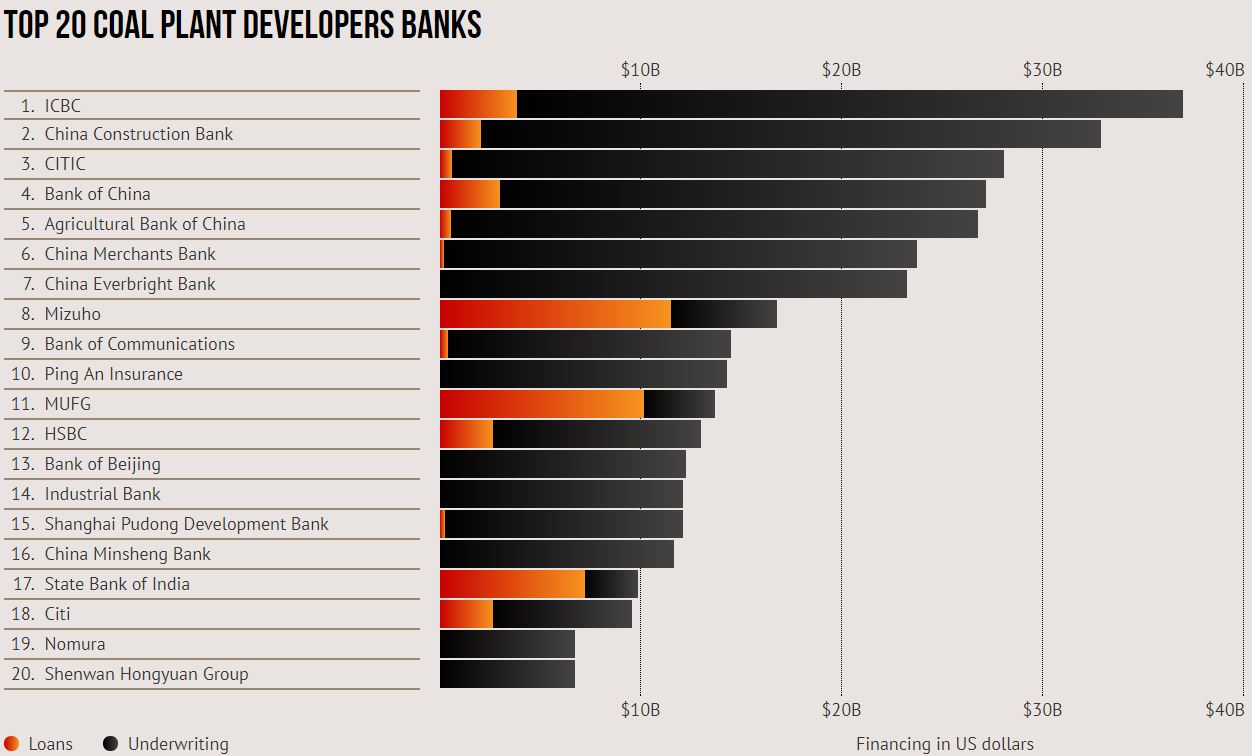 Australia’s wholesale electricity price doubled with the closure of Victoria’s 1600 MW Hazelwood Power station which supplied 4-5 per cent of national demand. Hazelwood was made unprofitable by subsidised intermittent wind being able to displace it and force it off the stable output levels for which it was designed.
Australia’s wholesale electricity price doubled with the closure of Victoria’s 1600 MW Hazelwood Power station which supplied 4-5 per cent of national demand. Hazelwood was made unprofitable by subsidised intermittent wind being able to displace it and force it off the stable output levels for which it was designed.
Now AGL wants to close its 2000 MW Liddell coal-fired station in 2022, claiming that the station is archaic and unprofitable. In fact, Liddell was only bought in 2013 when AGL was under a different management. Its four 500 MW boilers had been replaced as had other key elements of its operational capital. As a stand-alone facility, it has many decades of profitable operation before it.
AGL is now Australia’s largest energy supplier and on top of the 2,000 MW in Liddell it has over 6,000 MW in major fossil plant capacity (Loy Yang A, Bayswater and Torrens Island) plus other smaller fossil fuel plant and, of course, some wind generation.
The attraction top AGL of Liddell’s closure, even if offset by new renewable capacity, is that it will mean higher overall electricity prices to a firm whose profits are and will continue to be dominated by returns on its coal generation assets.
AGL has done its sums – its shareholders gain a net benefit from higher prices resulting from scrapping a valuable asset. This reinforces benefits the firm considers it receives from its positioning (“let’s face it. Things are changing!”) as a green energy supplier.
No independent supplier would contemplate closing Liddell – and for this reason AGL would not consider selling its “unwanted” power station. Liddell in another party’s ownership would remain in operation and its extra capacity would result in lower prices than if it is closed. This would also give far greater assurances of continuous reliable supply.
For consumers the flipside of producers earning excess profits is higher prices. Consumers’ costs will also be boosted by the need for producers to incur additional expenditures to compensate for the intrinsic unreliability of renewable energy. The government is developing the National Energy Guarantee (NEG) – an insurance system that intermittent generators must buy – to provide greater assurance against blackouts. The Elon Musk battery and the mooted Snowy 2 pumped storage are among these, though all would need a government subsidy to be competitive.
In other words, government subsidies to forms of renewable electricity combined with some market power on AGL’s part brings about a rift in the interests of an electricity supplier and the electricity market.
The sponsors of renewable energy subsidies claimed that the subsidies would drive down electricity prices in the medium term because existing fossil fuel plant, having incurred sunk costs, would stay online even though they were losing money. That is not how it has worked out and the closure of otherwise profitable coal generators has reduced capacity. Electricity prices have risen, as illustrated below, in response to the increased requirement for subsidised renewable supplies.
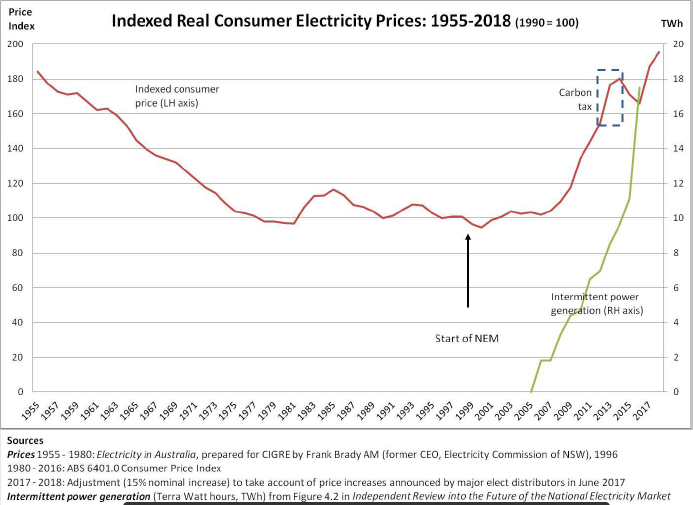 As a result, Australia has lost its pole position in electricity competitiveness. The gradual increase in subsidised renewable energy in forcing out coal plant has transformed the Australian industry from perhaps the cheapest in the world into, on some measures, one of the most expensive in the world.
As a result, Australia has lost its pole position in electricity competitiveness. The gradual increase in subsidised renewable energy in forcing out coal plant has transformed the Australian industry from perhaps the cheapest in the world into, on some measures, one of the most expensive in the world.
A 2022 closure of Liddell would mean a further deterioration of industry competitiveness and increased household prices. Some options to prevent this would include new capacity being built – perhaps an enlargement of Victoria’s Loy Yang B now under Chinese majority ownership, or the National Party’s call for a government-financed new station in Queensland. But even with such new investment, there will be a great deal of pressure placed on AGL to maintain or sell Liddell – after all, if the station were really worthless it could just hand back ownership to the NSW Government which could seek an alternative owner.
Alan Moran is the author of Climate Change, Policies and Treaties in the Trump Era.
Got something to add? Join the discussion and comment below.
Got something to add? Join the discussion and comment below.
Get 10 issues for just $10
Subscribe to The Spectator Australia today for the next 10 magazine issues, plus full online access, for just $10.

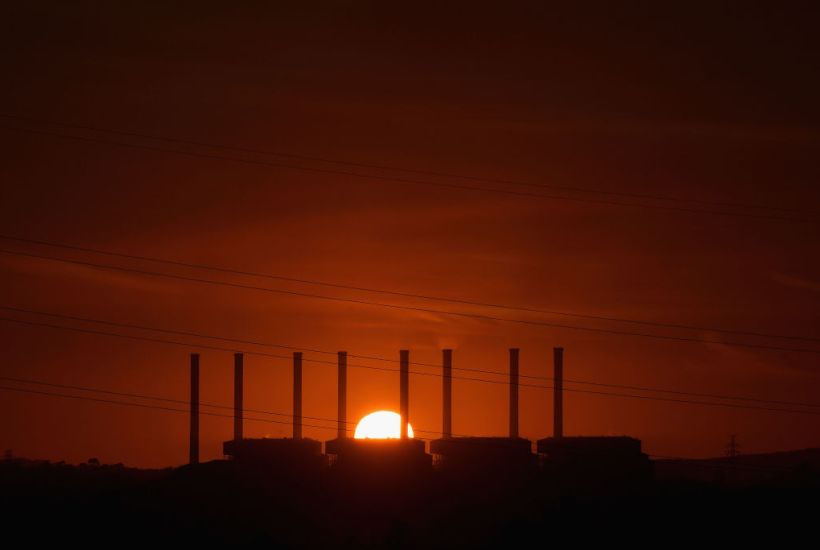
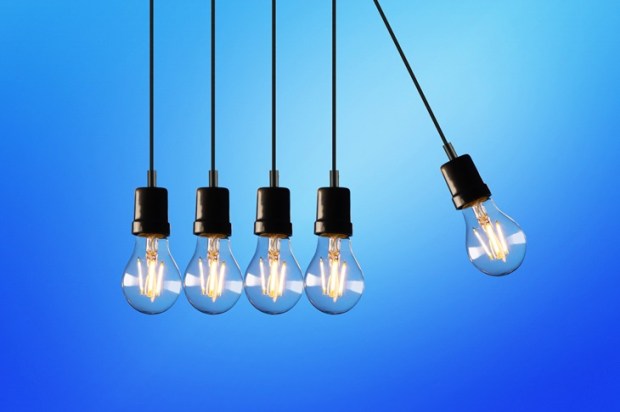
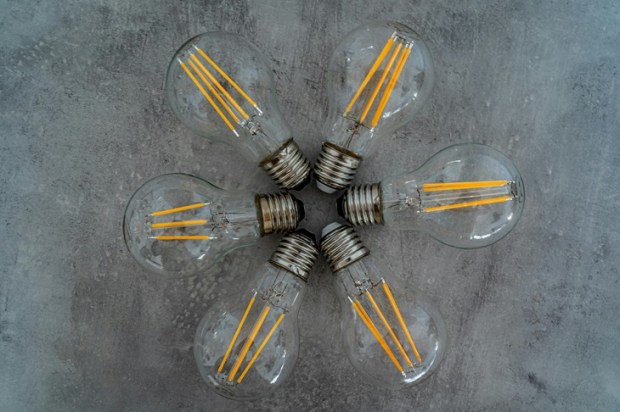



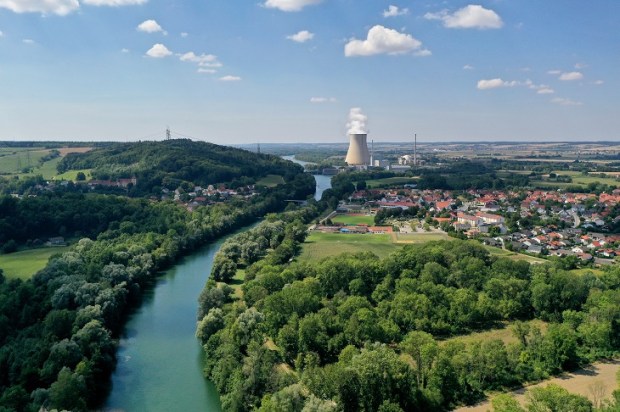


















Comments
Don't miss out
Join the conversation with other Spectator Australia readers. Subscribe to leave a comment.
SUBSCRIBEAlready a subscriber? Log in